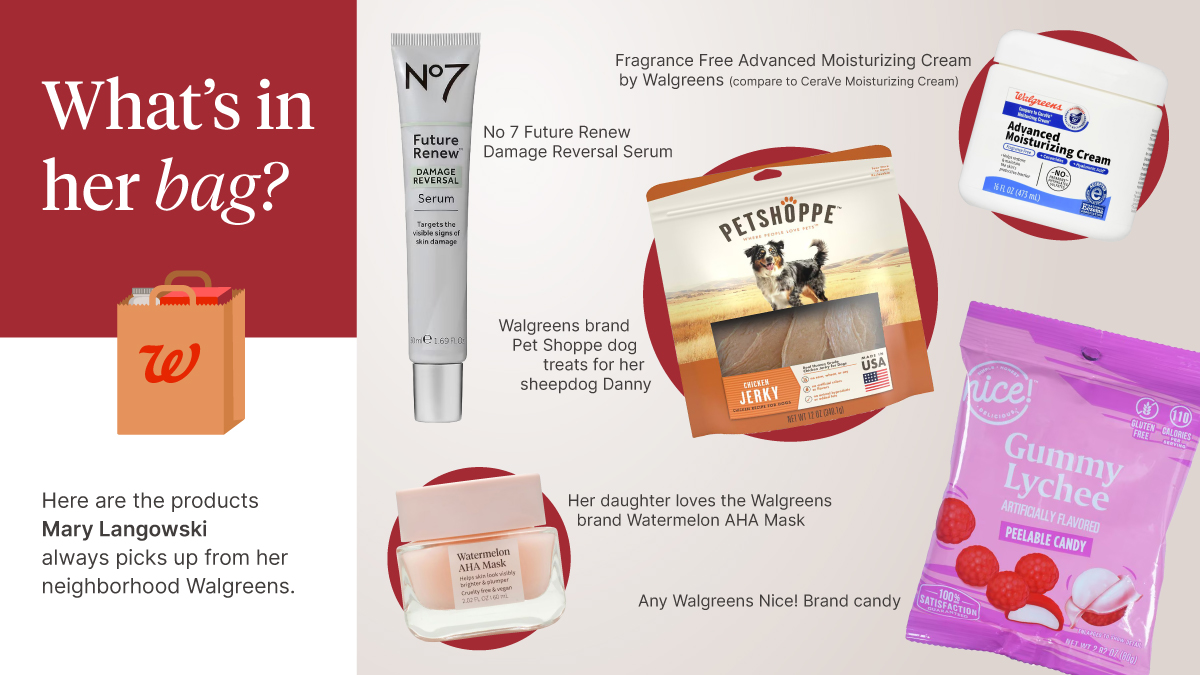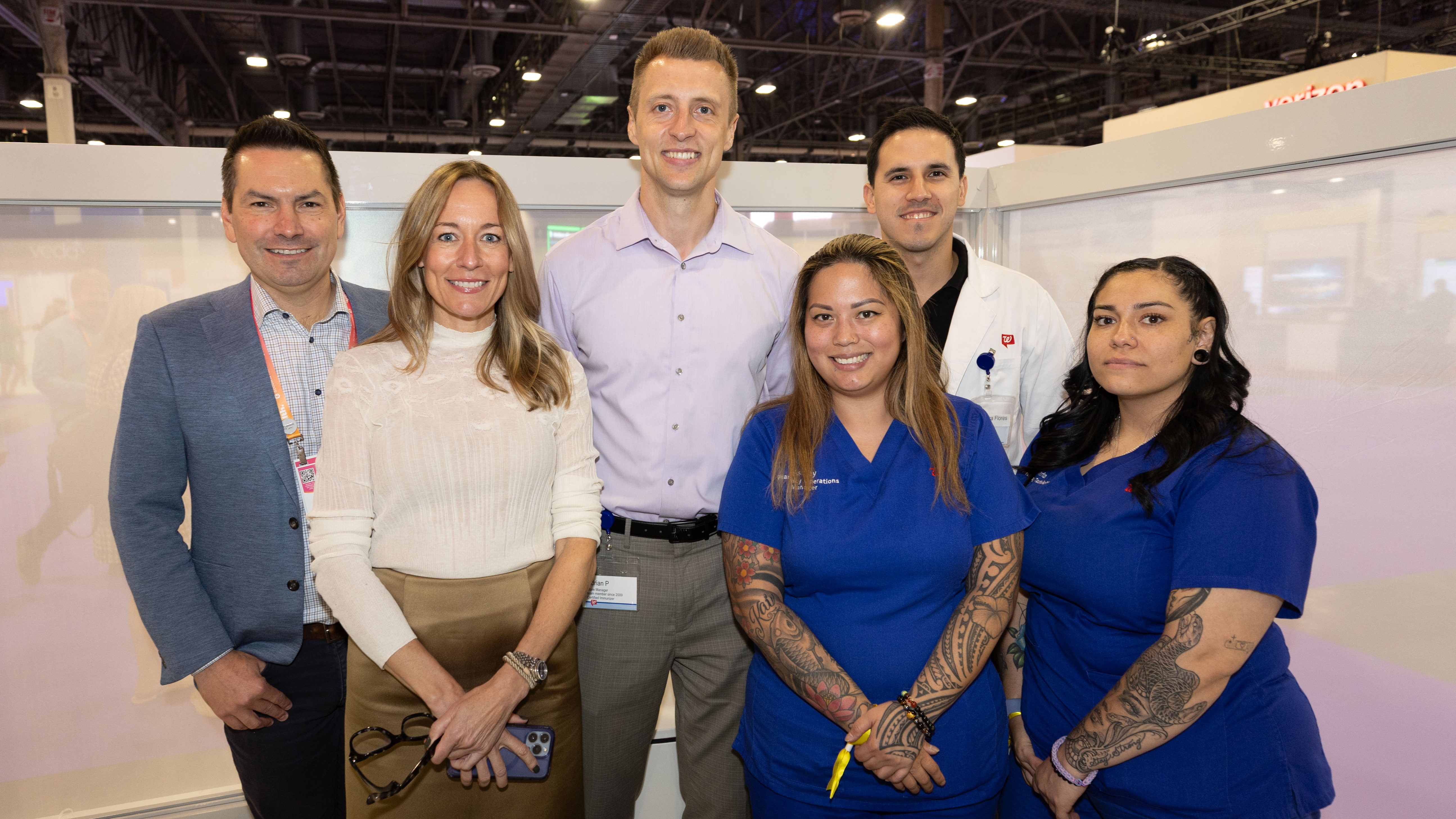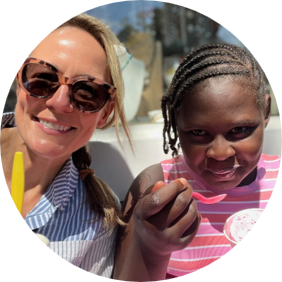It’s Christmas night in rural Minnesota. Mary Langowski is 14 years old, and she’s walking from room to room at her local hospital, visiting patients who are too sick or frail to leave for the holiday. She remembers spending a long time speaking with one older woman, who later called Langowski’s parents to tell them what a nice Christmas evening she had chatting with their daughter.
“These patients had seen and done and lived through things that were incredibly fascinating,” she recalls. “For a 14-year-old kid who had seen and done nothing, it was like I tapped into this treasure trove of interesting stuff that was right there in my community that I thought was otherwise ordinary.”
A teenager spending her free time at the local hospital might seem unusual, but that’s exactly what Langowski wanted to do as a young adult. She spent so much time there that they eventually gave her a job, which included clearing the parking lot for a medical helicopter to transport a patient to the city hospital. As exciting as it was working at the hospital, Langowski also noticed things that didn’t sit well with her.
“I realized that there was often little humanity in healthcare,” she says. “There were so many patients who nobody would talk to, touch or interact with for most hours of the day. They were sort of hooked up and left there. I remember thinking that’s not how I think about health and well-being. That started to get me interested in what I could do to change the healthcare system.”
Langowski has built a successful, albeit nontraditional, career seeking the answer to that question. Just a little over six months into her role as executive vice president and president of U.S. Healthcare at Walgreens Boots Alliance, she and her team are working on solutions to make healthcare better and more accessible in the U.S. The answer, in part, lies in the power of the patient-pharmacy relationship.
“About half of the U.S. population has at least one chronic condition, and that number is expected to grow,” says Langowski. “For a patient managing a condition like diabetes or heart disease, there are ways we can make their lives better. Our pharmacists encourage patients to become more engaged in their own care and can work with them on behavior changes and help them navigate multiple conditions. Patients need a trusted source and connection point, and nobody is in a better position than Walgreens to be just that.”
“But what does a healthcare system look like with the pharmacy at the center?” she continues. “That’s what we’re building toward.”
On not always following the rules
Wanting to make an impact in healthcare, Langowski initially thought she’d become a doctor. She ended up working on state and federal healthcare policy and attending law school at the University of Iowa. So how did she get there?
“By not always following the rules,” she says. “I've always been a believer that a person should worry less about a traditional, structured path to do what they want to do. Especially when you’re starting out, you should be at the buffet, testing things out and figuring out what you're interested in and good at.”
Langowski says she also developed mentors who encouraged her to take risks early in her career and make non-traditional moves.
"It was tough to take the kind of path I took, so it was helpful to have people looking out for me along the way,” she says.
Langowski figured out that she enjoyed interacting with people and building relationships and had an appetite for details and solving complex problems. Those skills got her a job working on healthcare policy in Iowa and eventually landed her in Washington, D.C. She joined the team of now retired U.S. Sen. Tom Harkin (D-Iowa), managing his Medicare and Medicaid portfolio. Harkin championed healthcare policy reform throughout his career, most notably working to pass the Americans with Disabilities Act, and Langowski supported him during the passage of Medicare Part D.
“Having a good understanding of Medicare and Medicaid makes working in healthcare a lot easier,” Langowski says. “Once you learn how the money flows, you can better see opportunities to improve something to solve a problem in healthcare.”

Learning how to get legislation across the finish line was another important lesson for Langowski.
“A lot of working in D.C. is getting creative about who you collaborate with to get something done,” she says. “You don't do that by working with one side of the aisle or one region or one office. You do it by partnering and working with many, making your case and helping others understand how it works for them. It teaches you to be an advocate, a salesperson and to know how and when to compromise.”
Langowski’s work in healthcare policy led to many career opportunities including several years consulting with pharma, payers, nonprofits and retailers on complex healthcare transformations where she was able to work alongside who she calls “some of the great negotiators of our time” – including retired Senators Daschle, Dole, and Mitchell. She also worked for several years with CVS Health, including as Chief Strategy and Corporate Development Officer, where she helped devise the expansion of the company’s strategy in healthcare. But her tenure as chief executive officer at Solera, a digital healthcare company, is what she says prepared her the most for her role at WBA.
“You’ve heard our CEO Tim Wentworth talk about how we’re in a turnaround. Solera was also in a turnaround in a cash-constrained environment where every penny counted. We pivoted the business model, we updated and re-launched the technology, launched several new products, evolved to a more advantageous economic model and reorganized the company’s talent for higher impact,” Langowski says.
Langowski’s successful turnaround experience at Solera coupled with her knowledge of federal healthcare policy and experience in complex legal and commercial deals is part of what makes her uniquely positioned to lead the U.S. Healthcare segment at WBA.

Short- and long-term goals
Since joining WBA, Langowski says she and the Executive Committee have been assessing everything the company’s doing today and solidifying what the company should be doing moving forward.
One of the major shifts that happened in Langowski’s first few months on the job was that Walgreens Specialty Pharmacy moved under her purview as part of U.S. Healthcare segment. This was done, in part, to better organize Walgreens’ healthcare offerings to drive more business-to-business partnerships, like payers, pharma and others.
In addition to restructuring the U.S. Healthcare team for success, Langowski is prioritizing Walgreens buying fairly and being paid fairly for the pharmacy and healthcare services it provides; optimizing WBA's healthcare assets, including wholly owned subsidiaries CareCentrix and Shields Health Solutions; and developing services that build on Walgreens’ core strengths.

"Whether it's a health plan, a provider network or a pharmaceutical company, we want to work with partners on solutions as 'one Walgreens,’” Langowski says. "The U.S. Healthcare organization is now structured for growth with a plan in place to achieve success, and we are now looking to the future.” Over the next three years, she wants to focus on how Walgreens can become an entry point into the U.S. healthcare system that focuses on patients and what they need.
“The problem with the system today is that every patient has several different providers, each with their own systems and processes. That’s not how a human being wants to experience healthcare,” she says.
“There’s a clear need for Walgreens to play an even larger role in healthcare delivery. By building on our core strengths—the millions of Americans and thousands of communities that rely on Walgreens every day—I believe we will continue to serve as the front door, mid-point and end-point to healthcare and grow that trust and connection for years to come.”
More humanity in healthcare: A professional and personal mission

For someone who has spent her entire career working to improve healthcare, Langowski’s life lately has allowed her to see the system’s challenges through a mother’s eyes. Her 9-year-old daughter, Rose, who she describes as “energetic, artistic and full of moxie,” has several medical diagnoses.
“You can do everything under the sun for a child with complex conditions, but if you don’t have the right physicians and pharmacists on your team, it is hard to be successful,” she says.
She shared how it’s the pharmacists who she speaks with most frequently about her daughter’s care, often troubleshooting prescription questions with them face-to-face so that her daughter can get what she needs, when she needs it. It’s the pharmacist who offers her the support and guidance—the humanity she first noticed was lacking while wandering the lonely hallways of a rural Minnesota hospital.
“I do not want to live in place where there is no Walgreens, and no pharmacy presence in a community,” Langowski says. “Pharmacists were so critical in the small town where I grew up. Without a pharmacy, communities suffer.”
Langowski says she took the job at WBA with her eyes wide open—she knew the stakes were high and the challenges were real.
“I wake up every day energized by the mission, my belief that we are critical as a healthcare company, and I’m humbled by the work each and every one of our team members is doing in communities across America,” she says. “It’s not easy work, and every day I try to be a positive force in supporting those efforts.”




